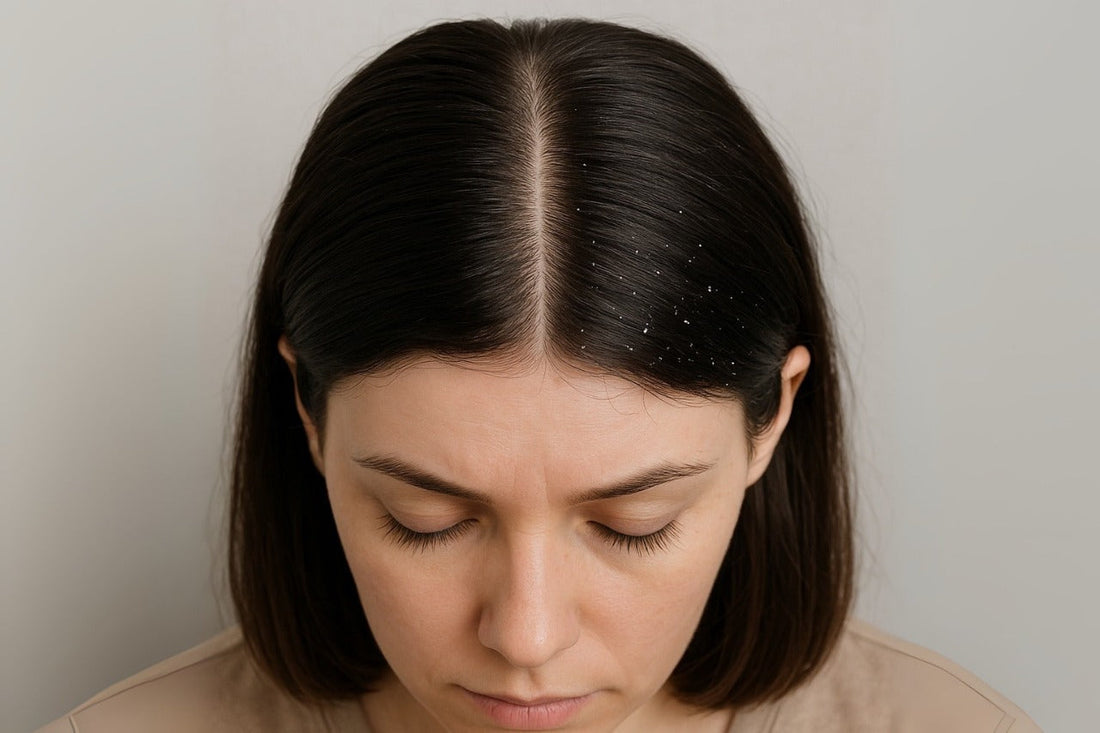Seborrheic dermatitis is a chronic inflammatory skin disorder that predominantly affects sebaceous gland–rich areas, such as the scalp, face (including eyebrows and nasolabial folds), and upper chest. It often presents with persistent scaling (dandruff), erythema, and itching. In infants, it can appear as "cradle cap". Although the exact pathogenesis is multifactorial, contributing factors include hormonal fluctuations, neurological conditions, immune dysregulation, and overgrowth of the normal skin yeast Malassezia.
Case Study
A 30-year-old man presented with chronic scalp and facial involvement. He reported persistent redness, greasiness, and thick scaling around his hairline, eyebrows, and beard area, accompanied by severe itch and dryness. The condition had worsened despite home remedies (emollients, oils) and environmental cleaning. On examination, the dermatologist diagnosed seborrheic dermatitis, reassuring him that hygiene or infection were not the cause, and explained that effective treatments exist (avoiding irritants like heavy ointments). Within weeks of initiating therapy, the patient's redness, scaling, and itch markedly improved, illustrating that appropriate medical management can significantly relieve symptoms.
Etiology and Risk Factors
The precise cause of seborrheic dermatitis is unknown, but several predisposing factors are recognized:
- Endocrine and Neurological Influences: Hormonal imbalances and neurological disorders (e.g. Parkinson's disease, Down syndrome) can contribute.
- Immune Dysfunction: Altered immunity plays a role; for example, HIV infection and lymphoma are associated with more severe disease.
- Malassezia Yeast: Overgrowth of Malassezia (formerly Pityrosporum) on oily skin areas can trigger inflammation.
- Medications: Certain drugs (e.g. interferon-alpha, chlorpromazine, gold salts) may precipitate or worsen the condition.
- Stress and Environment: Psychological stress and cold, dry weather often worsen outbreaks.
Clinical Features
Symptoms can differ by age group and affected sites:
- Adults: Typical findings include flaky, white to yellowish scale (dandruff) on the scalp or facial hair (beard, mustache). Erythematous, scaly patches may also appear in other seborrheic areas.
- Infants (Cradle Cap): Infants (3–12 months) develop thick, yellow-white greasy scales on the scalp, and sometimes on the eyelids, ears, or diaper area.
- Exacerbating Factors: Flare-ups commonly worsen with stress and climate changes. Cold winters often intensify symptoms.
Treatment Options
| Treatment Type | Examples | Frequency |
|---|---|---|
| Topical Antifungals | Ketoconazole 1-2%, Ciclopirox | 2-3 times weekly |
| Topical Corticosteroids | Hydrocortisone 1%, Fluocinolone | Short courses (1-3 weeks) |
| Calcineurin Inhibitors | Tacrolimus, Pimecrolimus | As needed for sensitive areas |
| Keratolytics | Salicylic acid 3-6%, Coal tar | Weekly applications |
Key Management Strategy
Treatment should be maintained even when symptoms improve, as relapse is common. Most patients respond well to a regimen of medicated shampoo and topical therapy, with noticeable improvement in a few weeks.
Dry Scalp Eczema (Asteatotic Eczema)
Dry eczema, also known as asteatotic eczema or eczema craquelé, is a form of dermatitis that arises from extreme skin dryness (xerosis). It commonly affects elderly individuals and tends to flare in winter. The skin becomes very dry, rough, and fissured, often resembling a dried riverbed.
Treatment and Prevention
- Skin Care Measures: Limit bathing, use warm water, and apply thick moisturizers immediately after washing.
- Medications: Low-potency steroids for short periods, calcineurin inhibitors for sensitive areas.
- Humidification: Use room humidifiers in dry seasons.
Disclaimer: This article is intended for informational and educational purposes only. It is not a substitute for professional medical advice, diagnosis, or treatment. Readers should consult a qualified healthcare provider for personalized guidance on any scalp or skin condition.


2 Comments
اهلًا ودي اسألك سؤال انا عندي غدة درقية نشطة والحمدلله تميت ثلاث سنين اتعالج وصرت احسن بكثير تكه وتروح بس شعري لاحظته صار جاف ويتشبك وش تنصحيني استخدم مع الكورس
I have a mild case psoriasis can l ise the lapurere oil to enhance hair growth and moisturize my scalp?